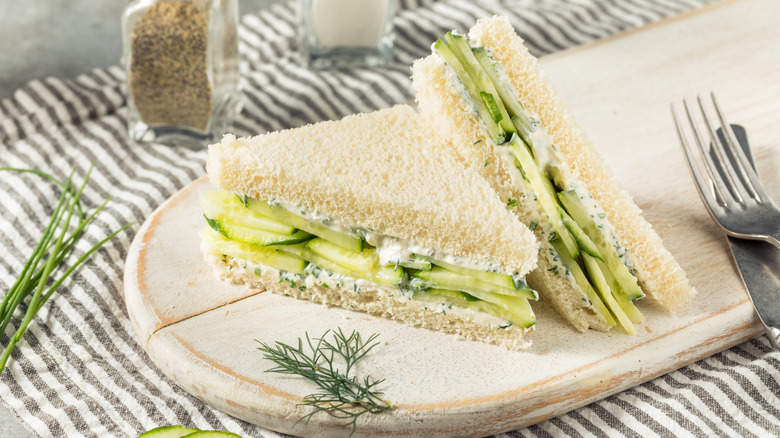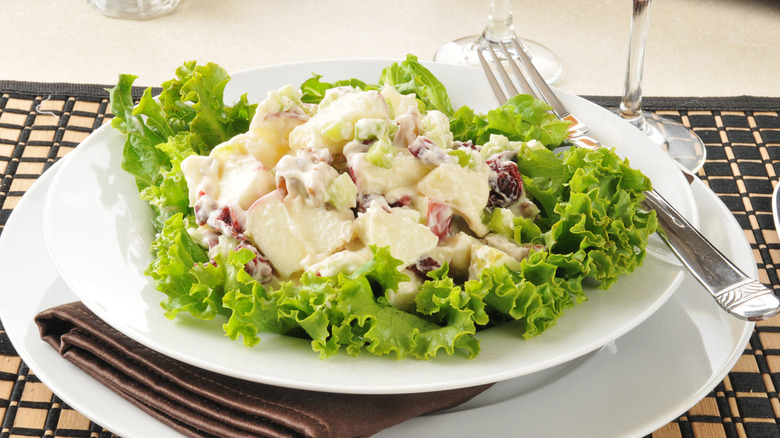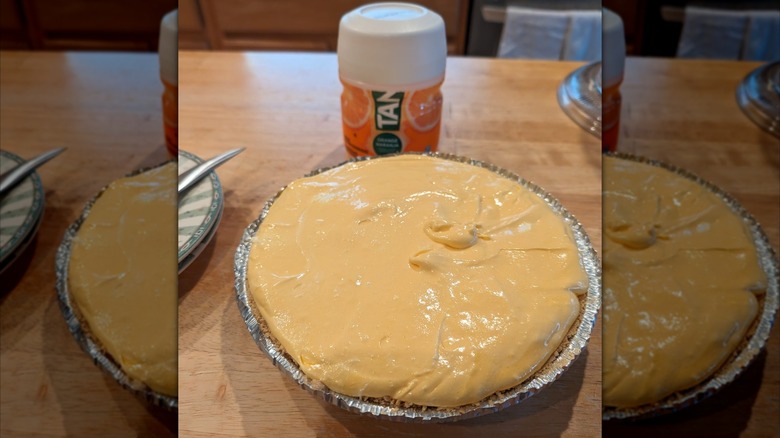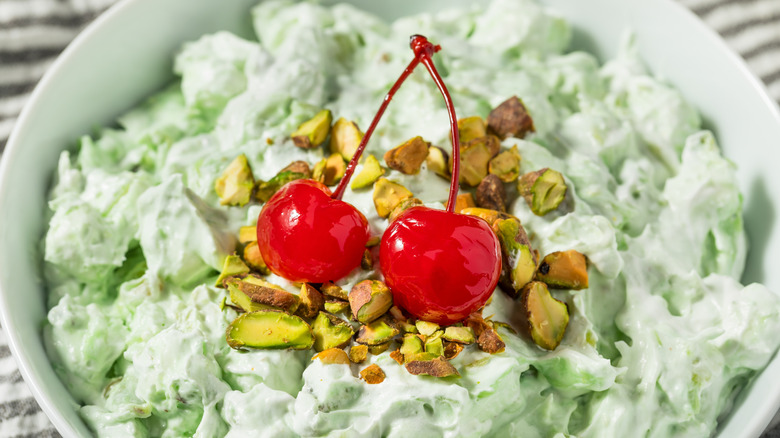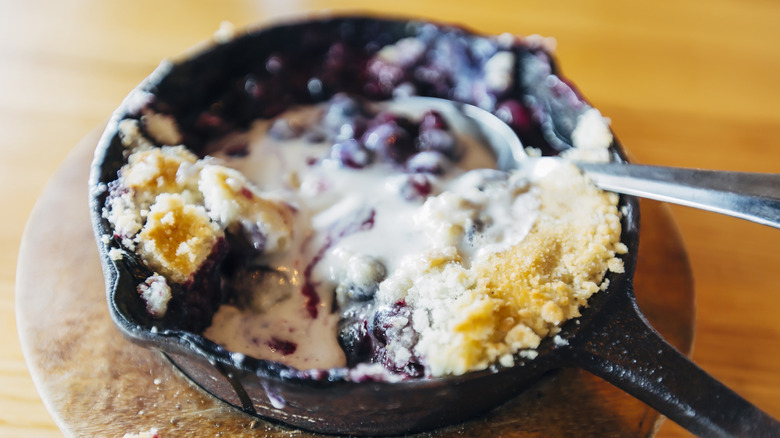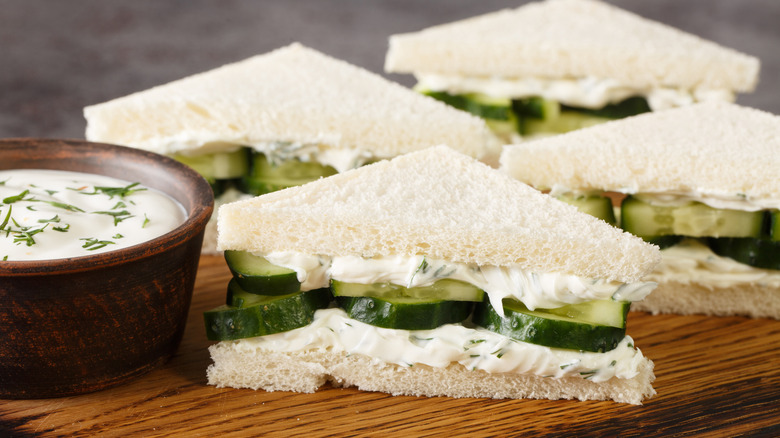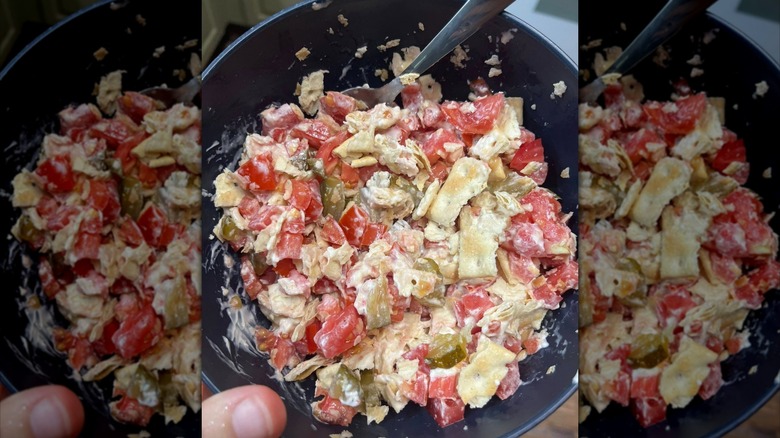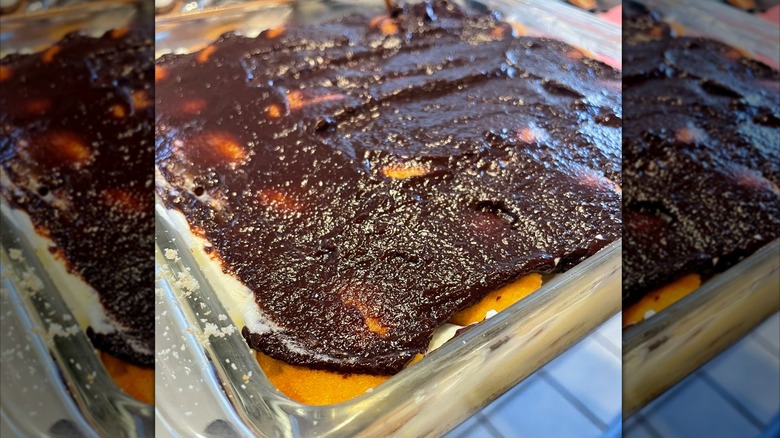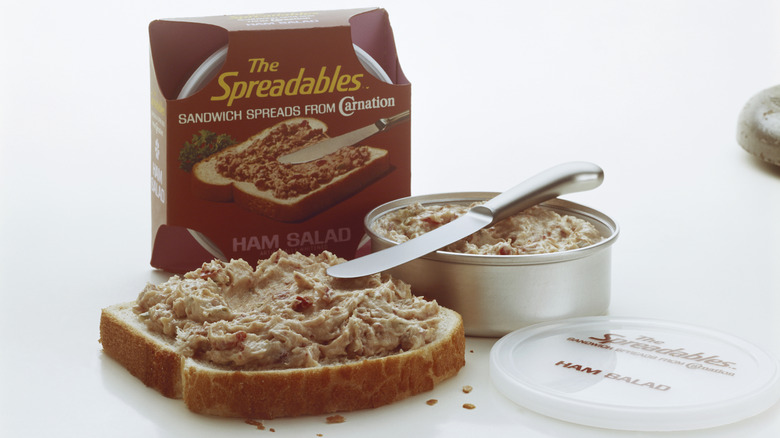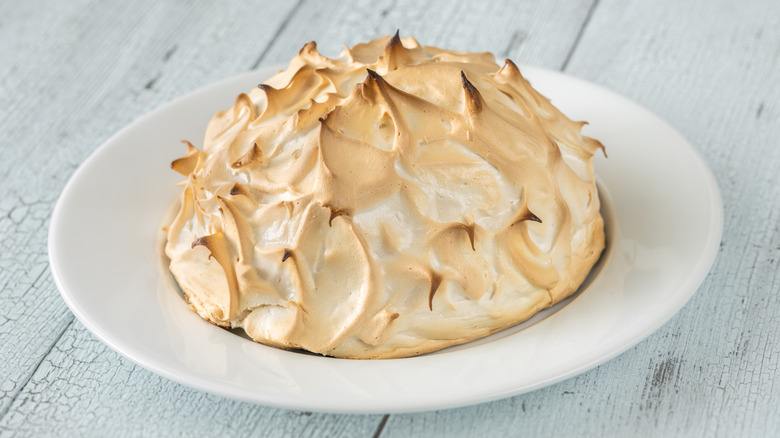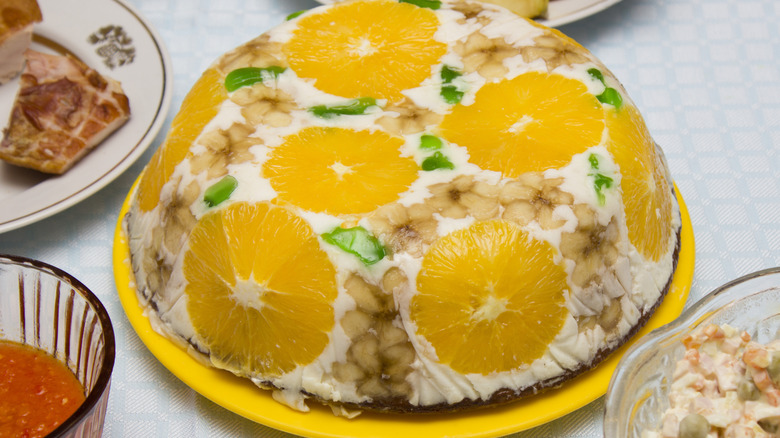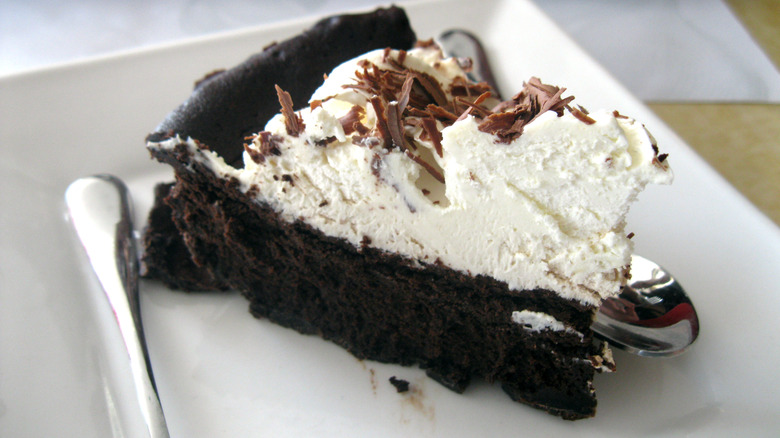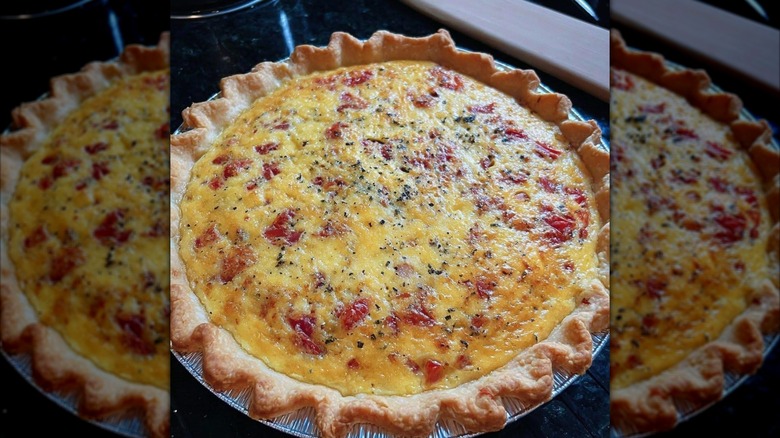Throwback Summer Foods People Don't Eat In 2025
When you think of quintessential summer foods, what do you imagine? Hot dogs and burgers on the grill? S'mores around a campfire? What about summertime picnic and potluck favorites like potato salad or pasta salad? All of these foods are certainly nothing new, but, for some reason, they've stuck around while other favorite summertime eats haven't.
If you're looking for something unusual, unique, or brand-new to serve this summer, you're in the right place. While the potato salads of the world have hung on to their popularity, other seasonal favorites have fallen by the wayside — but often not really for any good reason. Most of these foods are just as tasty today as they were decades or even centuries ago when they were first invented. While some still hang on to a sliver of regional popularity, they all have lost their widespread superiority. These are the throwback summer foods people just don't eat anymore, in 2025.
Waldorf salad
Waldorf salad once enjoyed substantial popularity. Today, you might not even know what's in it. Aren't there some miniature marshmallows involved? You might be thinking of Watergate salad (which we'll get to in just a moment).
The Waldorf salad was originally created by Oscar Tschirky, who worked at the Waldorf Astoria Hotel from 1893 to 1943. His original salad creation, debuting in 1893, the same year as the hotel, included just apples, celery, and mayonnaise — but that's not the version of the Waldorf salad that became a classic. Over time, the salad has changed and evolved. Walnuts found their way into the recipe, as did paprika, and a bed of greens on which the salad is usually served. This has become the classic (though you can easily find individualized recipes out there that add in other fruits and protein, too — and even, yes, some marshmallows).
The Waldorf salad enjoyed great popularity up until the mid-1900s, so why did it fall out of favor? It's likely that this salad fell out of the public eye just as many other mid-century odd salads did. American tastebuds began to eschew sweet salads and mixtures of mayo and fruit to the point that, today, many people would turn up their noses at plopping a spoonful of Hellmann's atop a Granny Smith.
Tang pie
If you grew up in the 1970s to the 1990s, chances are good that you vividly remember Tang — but when was the last time you actually drank some Tang? Yes, believe it or not, you can still buy it, even if it's not exactly part of the zeitgeist like it once was.
A 1950s invention, Tang is a shelf-stable drink mix that offers vitamin C and only needs to be mixed with water. After NASA sent Tang on its space age explorations, the mix quickly became popular with Americans at home, too. Today, it's more popular in other countries, such as in the Middle East and Latin America — and, in fact, astronauts do still drink Tang in space when they're staying at the International Space Station.
During Tang's heyday, though, home cooks found all sorts of ways to use their powdery Tang, including in a Tang pie – a perfect, creamsicle-y dessert for summer. Simply made by mixing Tang with whipped cream, condensed milk, and cream cheese, and then letting the mixture set in a graham cracker crust, this pie is everything you want in a no-bake, refrigerated sweet summer treat.
Watergate salad
One look at Watergate salad and you'll say "yep, that looks like a vintage salad." Lime green, chunky, and potentially topped with a maraschino cherry, this salad's origins are shrouded in mystery. It's assumed, though, that the Watergate salad got its name from a Watergate cake recipe that was published around the same time of the Watergate political scandal, as the two desserts' flavor profiles were similar. (As for the cake, it might be the case that the public nicknamed it that because of all the nuts it contained, a bit of a cheeky nod to the news headlines of the day.) Regardless of origins, though, a classic Watergate salad, popular in the 1970s, contains pistachio pudding mix, pineapple, nuts, and whipped cream.
Watergate salad was one of the many sweet so-called "salads" born out of an era of convenience, when home cooks were cobbling together groundbreaking new grocery items — like Jello's pistachio pudding mix, which debuted in 1975 — in a creative display of decadence. Today, many will likely only be making a Watergate salad if they're doing so out of nostalgia. But you might want to give it a try, and maybe even give it your own, updated political name, poking fun at your party of choice.
Sonker
It sounds like the name of a cryptid, or maybe the noise that a tuba might make. Instead, it's an old-school dessert that's ideal for those short months of summer when all the great produce begins to come in — strawberries, blackberries, blueberries, peaches. A sonker is quite similar to a cobbler, but with less fuss. You just make your batter, toss it in your pan, and add your fruit, before baking.
Some theorize that the word "sonker" may've derived from the word "sinker," from the way the ingredients all sink together. Whatever the case, now, if you want to eat some sonkers without making them yourself, you'll want to travel to where the sonker originated, in the 19th century: North Carolina. There, in one particular county (Surry), you can find sonkers sold in bakeries, a sonker trail, and even a sonker festival. Travel outside of the state, though, and you'll be hard-pressed to find this old-school treat.
Seven-layer salad
You may not be able to list all the ingredients for a classic sonker or a Waldorf salad, but you might be more familiar with seven-layer salads. Like Tang, though, when was the last time you actually had it? Seven-layer salads don't enjoy as much popularity as they once did. That's partly because, as far as salads goes, this may have some vegetables, but it's certainly not the picture of health.
Mayonnaise meets sugar in a dressing both tangy and sweet. Other layers, though it might differ from home cook to home cook, may include bacon, diced ham, frozen peas, hard-boiled eggs, peppers, shredded cheese, crushed potato chips, and other affordable options. Layering it all in a clear dish is a requisite.
If you're a young, Millennial home cook, chances are likely you aren't making a seven-layer salad for your next barbecue — but maybe you should, even if just as a throw-back to your parents or grandparents. Sure, it's not wildly healthy, but it still counts toward your five a day and, as mentioned, all of the ingredients can be cheaply and easily found. Plus you can prep it ahead of time, and the longer you leave it in your fridge, the better it tastes. Flavor meets convenience meets affordability.
Cucumber sandwiches
While seven-layer salads may make you think of Midwest potlucks, cucumber sandwiches feel significantly more refined — but have you ever actually eaten them? Additionally, while cucumber sandwiches may conjure up images of tea rooms, they're actually a summer staple, historically. Story goes, cucumber sandwiches came to be in the 1800s, when British colonizers in India were on the hunt for a light, refreshing bite as they battled the unfamiliar heat.
Over time, cucumber sandwiches have evolved, but the variation that was once-upon-a-time more popular throughout the American South and Midwest utilized basically just white bread, cream cheese, and cucumbers. If you want to make some refreshing cucumber sandwiches yourself, and see if the Brits knew what they were doing, thinly slice some English or Persian cucumbers, blend fresh herbs like dill and chives with cream cheese, and stack it all between that quintessential white bread. If you want to upgrade your cucumber sandwiches beyond the classic, consider using a Pillsbury French loaf instead of white bread, and mixing mayonnaise and Italian salad dressing mix with your cream cheese.
Tomato cracker salad
With vintage Southern roots, the tomato cracker salad doesn't get as much love as other regional summertime staples for a solid reason: It's just doesn't look or sound very appealing. While the former might be true, though, (and the latter to some degree), it's worth noting that this dish basically carries the same flavors as a tomato sandwich — and don't we all love a tomato sandwich at the height of tomato season?
The fine details will depend on the recipe you use, but at the heart of this vintage salad that you could've found on tables in the 1970s, are three ingredients: tomatoes, saltines, and mayonnaise. (Yes, this is yet another summer dish that people don't make anymore that contains copious amounts of mayonnaise.) Otherwise, these salads might also include corn, green peppers, onions, or boiled eggs. You literally just break or chop it all up and mix it together.
Is it pretty? No. Is it tasty? Yes. And if you're still unsure, just consider all the many ingredients that can upgrade a tomato sandwich – bacon, avocado, cheese, etc. — and add those to the mix, too.
Éclair cake
Éclairs can sometimes be fussy and difficult for the novice home baker to take on. That's not the case for the éclair cake. A popular dessert of the 1970s and 1980s, this no-bake confection really needs to be in your summer dessert rotation. It couldn't be easier. It's affordable. It's delicious. No wonder that it was a potluck staple during the eras of big hair and jean jackets. Literally, you just layer vanilla pudding, graham crackers, and whipped cream, then top it all off with a chocolate icing.
Now, if you really want to get fancy with it, there are more recent variations of the éclair cake that attempt to more closely resemble a traditional French éclair — but these recipes are going to require you to make a pastry cream, put together a pâte à choux, and whip up a chocolate ganache. So, if you're not exactly looking to appear on "The Great British Baking Show" anytime soon, and you'd really just prefer the nostalgic flavors of the 1980s or '90s éclair cake, maybe don't even bother with the fancier iterations.
Ham salad
Tuna salad and chicken salad are still very much popular. Both the chicken salad and tuna salad were invented as a way to reuse leftovers by mixing whatever meat you had on hand with mayonnaise. Chicken salad grew popular first and then tuna salad followed as canned tuna brands gained prominence. Today, it's not at all uncommon to find chicken salad sandwiches and tuna salad subs offered at a variety of chain restaurants, and these chilled sandwiches are particularly tasty on a warm summer day. So what in the world happened to ham salad?
Ham salad has similar origins, coming into the mainstream as home cooks needed to serve something cheap that could use up leftover ingredients. The ham was often ground finely before being mixed with mayonnaise, as well as perhaps relish, mustard, eggs, and celery or onions. It was also a popular funeral food, as it could cheaply feed a crowd. Today, though, you're not going to see ham salad on any chain menus, and you'll probably need to go to an old-school diner to find something close to the OG.
Baked Alaska
For today's home cooks, they may have only ever seen a baked Alaska on television. It's an opulent dish that you certainly don't see on many restaurant menus today, and most home cooks have no interest in crafting it from scratch. However, if you take the time to do so, you might just find you have a new favorite summer dessert (or at least something cool to impress your friends with).
The baked Alaska can be traced all the way back to the 1800s, when the French were making something known as "omelette Norwegge," or the Norwegian omelet. The dish was cake and ice cream, coated in meringue. Then, supposedly, a Parisian chef brought a version of the Norwegian omelet to New York, with the "Alaska, Florida," the same year that the United States purchased Alaska. His "Alaska, Florida," still contained cake and ice cream covered in meringue, but the cake was specifically walnut spice cake and the ice cream was banana flavored.
The dessert became the baked Alaska as we know it today at Delmonico's, a New York City restaurant established in the 1830s. Substantial evidence shows the dessert being enjoyed there in the late 1800s — and diners can still eat it there today, if they so wish.
Jell-O salad
Jell-O just seems like a summertime food. It's colorful. It's cold. It's playful. However, the most you're likely to eat Jell-O now, as an adult home cook, is probably in shot form, if at all. But decades ago, Jell-O took on salad form, adopting both sweet and savory flavor profiles and finding its way into homes, restaurants, and gatherings both formal and informal, in droves.
In the 1900s, instant Jell-O was part of a host of newly available, convenient time-savers that home cooks took to with gusto and creativity. In addition to Jell-O providing a gelatin solution in a flash, a Jell-O salad specifically could be a one-dish meal and use up a range of leftovers. As the decades wore on, a more inventive Jell-O salad became almost a mark of a more sophisticated housewife.
However, eventually, even more convenient foods became a necessity for many households in the 1970s and 1980s, and being a picture-perfect housewife, complete with Jell-O mold, was less of a priority. As such, Jell-O salad became less of a staple and more of a novelty — a status it retains to this day.
Mississippi mud pie
The origins of Mississippi mud pie are about as clear as, well ... you can probably guess. If you've never had or made it before, Mississippi mud pie is another layered dessert similar to an éclair cake. Pudding, cream cheese, and whipped topping go into a graham cracker crust in some recipes. In others, there's a layer of brownies and Oreo, too.
There's also a Mississippi mud cake, but don't confuse the two desserts. The cake, which requires baking and standing over the stove, and is similar to a Texas sheet cake but with miniature marshmallows added, isn't as well suited to the hot summer months as the sweet chilled pie.
Back to the pie's origins. Some say the name was thrown out by a waitress observing a pie melting in the summer heat, but that doesn't really make sense given that the Mississippi mud pie isn't a melted pie but instead has its own refrigerated identity. Others say someone in the 1970s just put together the pie, basing it based on the older cake's flavors (the cake came about post-World War II). Whatever the case may be, the almost no-bake, layered treat is a good fit for chocolate fiends seeking a summertime sweet, and it deserves renewed interest.
Tomato pie
Do not confuse the vintage Southern tomato pie with the Italian tomato pie or the Philly-style tomato pie. There are still plenty of places you can find those two items, if you travel to the right parts of the country. Instead, we're talking Southern tomato pie, which takes full advantage of tomato season and leaves out the mozzarella, making this literally a pie, not a pizza. And of course, like many other good Southern-derived vintage dishes, this tomato pie also contains mayonnaise.
It's theorized this dish came about in the mid-20th century, as a way for home cooks to use up their extra tomatoes. Baked in a round pastry shell (not on a pizza crust), the tomato pie consists of layered slices of tomato topped with a mixture of mayonnaise and cheddar cheese. Throw in a few seasonings to taste and you have a simple, easy, cheap summer dinner. If you want to get real Southern with it, make sure to use Duke's mayonnaise.
